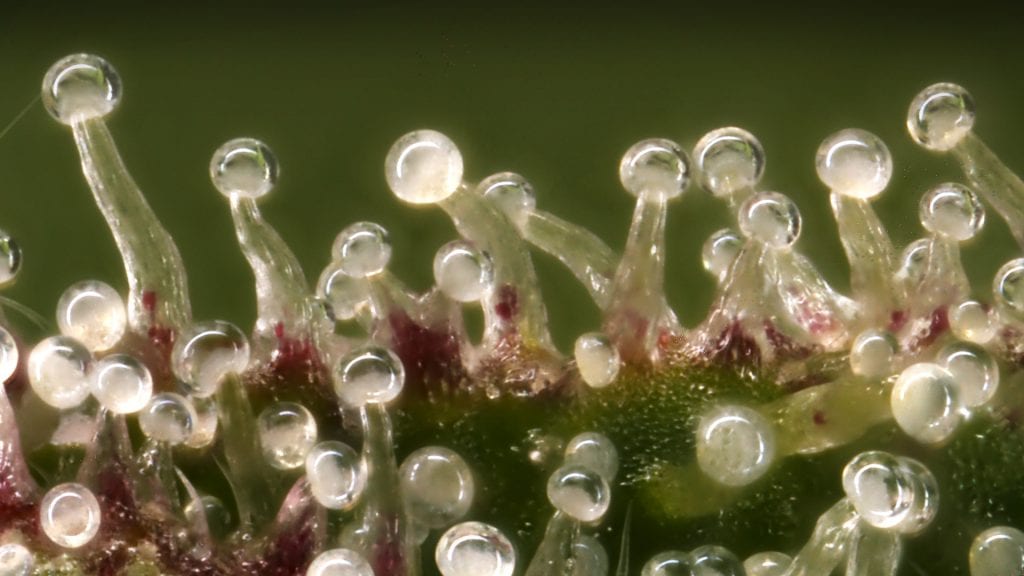Cannabis cultivation is both an art and a science, requiring a deep understanding of the plant’s biology to produce the highest quality and potency. Among the many features of the cannabis plant, trichomes hold a pivotal role in determining its therapeutic and recreational quality. These tiny, crystal-like structures on the surface of the leaves, stems, and flowers are not only fascinating from a botanical perspective but also crucial for growers aiming for the optimal harvest time, as well as processors interested in extracting valuable compounds like cannabinoids and terpenes. In this detailed exploration, we’ll dive into the world of cannabis trichomes, discussing their function, how they signal the plant’s readiness for harvest, the chemistry of the compounds they contain, and the processes used to extract these compounds for various uses.
What Are Trichomes?
Trichomes are tiny, glandular hairs that appear on the surface of cannabis plants. They serve several functions, including protecting the plant from pests and environmental stressors, and more importantly, they are the primary production sites for cannabinoids, terpenes, and other phytochemicals that are central to the plant’s effects on humans. There are several types of trichomes found on cannabis, but the most significant for cannabinoid and terpene production are the capitate-stalked trichomes, which are visible to the naked eye and give the plant a frosty appearance.
Indications of Harvest Readiness
One of the critical roles trichomes play is in signaling when a cannabis plant is ready for harvest. As the plant matures, trichomes change in appearance, a process closely monitored by cultivators to ensure optimal harvest time. Initially, trichomes are clear, indicating that the plant is still developing its cannabinoid and terpene profile. As they mature, trichomes transition from clear to a milky or cloudy color, signifying a peak in THC levels. Eventually, they turn amber, indicating a higher concentration of CBN, a cannabinoid that produces more sedative effects than THC. Harvesting at the right moment is crucial for achieving the desired balance of cannabinoids and terpenes, affecting the product’s potency, flavor, and overall effect.
The Chemistry of Trichomes: Cannabinoids and Terpenes
Trichomes are the chemical powerhouses of the cannabis plant, synthesizing a complex array of compounds that have significant therapeutic and recreational potential. The most well-known of these are the cannabinoids, including tetrahydrocannabinol (THC) and cannabidiol (CBD), which interact with the human endocannabinoid system to produce various effects. However, trichomes also produce terpenes, volatile compounds that contribute to the plant’s aroma and flavor. Terpenes are not only important for the sensory experience of cannabis but also play a role in the entourage effect, a theory suggesting that cannabinoids and terpenes work together to enhance the plant’s overall effects.
Processing and Extraction of Compounds from Trichomes
Extracting the valuable compounds from trichomes is a major aspect of cannabis processing, involving several methods to isolate cannabinoids, terpenes, and other phytochemicals. The choice of extraction method depends on the desired end product and includes solvent-based extraction (using alcohol, CO2, or hydrocarbons) and solventless techniques (such as dry sifting or using heat and pressure to make rosin). Each method has its advantages and considerations, including purity, yield, and the preservation of terpenes. Post-extraction, the concentrates undergo further processing to produce a wide range of products, from oils and tinctures to edibles and topical formulations, each tailored to specific consumer needs and preferences.
Conclusion
Trichomes are a focal point of cannabis cultivation and processing, embodying the essence of the plant’s therapeutic and recreational appeal. Understanding the development and chemistry of trichomes allows growers to optimize harvest times for maximum potency and terpene profiles, while extractors can refine their methods to produce high-quality concentrates. As the cannabis industry continues to evolve, the study of trichomes and their compounds remains a vital area of research, driving innovation in cultivation, extraction, and product development. Whether for medical, wellness, or recreational purposes, the tiny trichomes on the cannabis plant hold a wealth of possibilities waiting to be unlocked.




